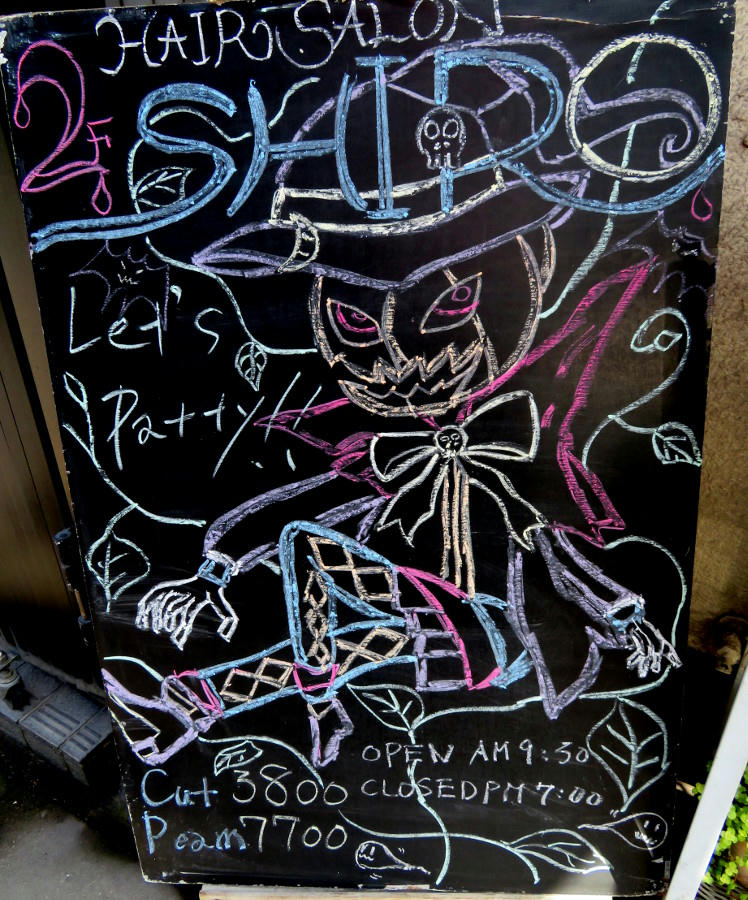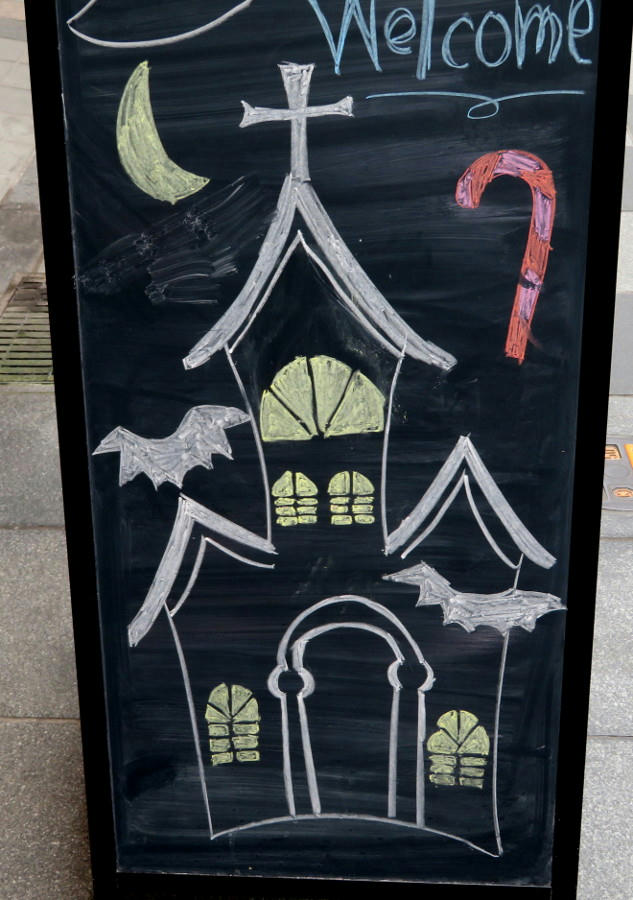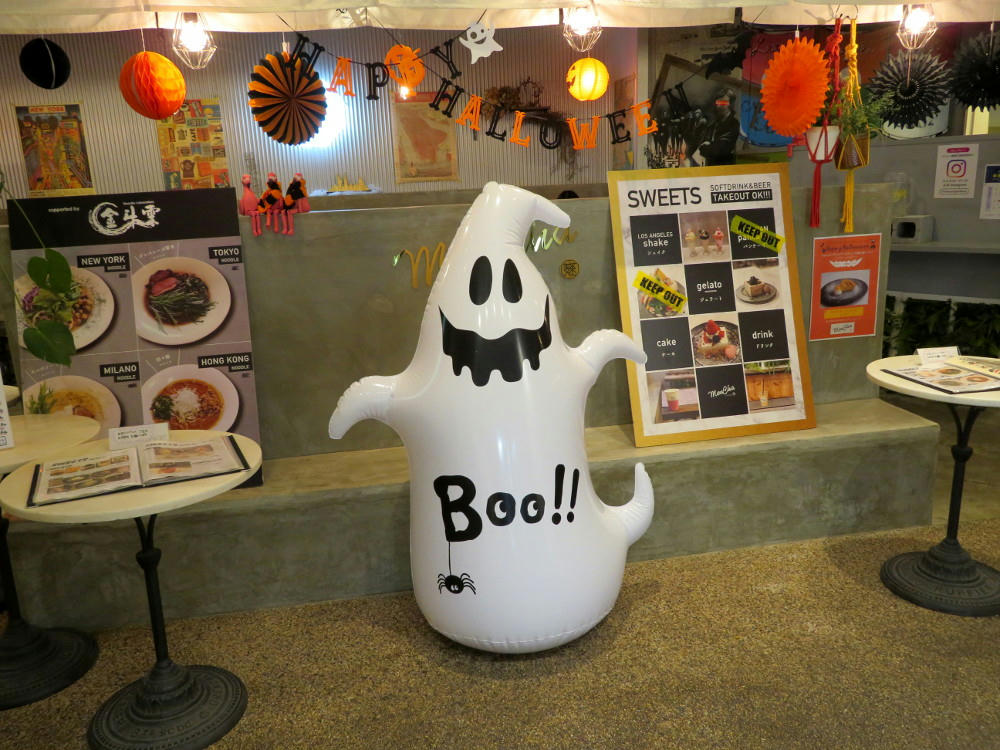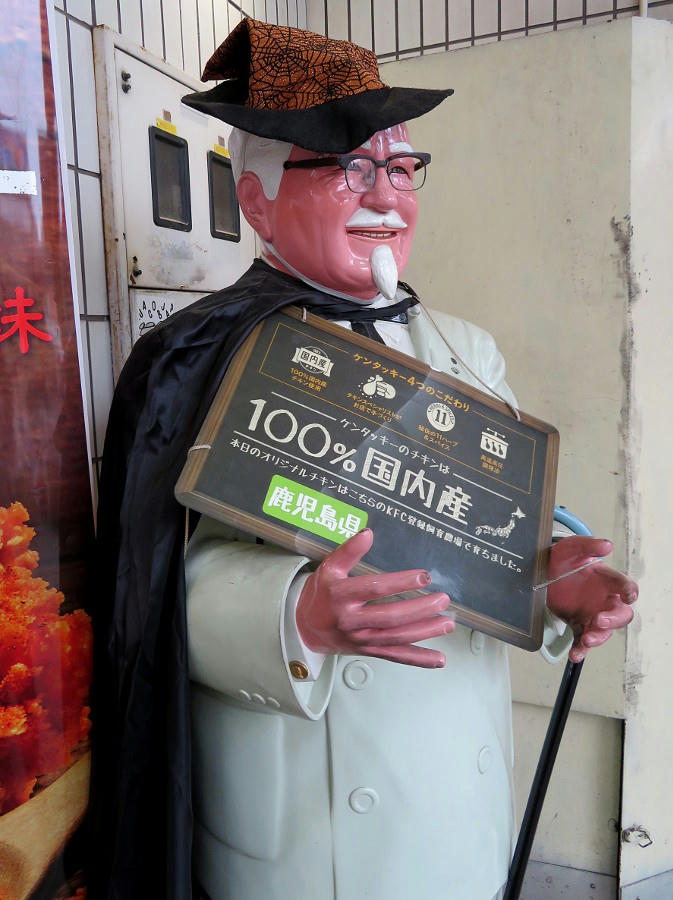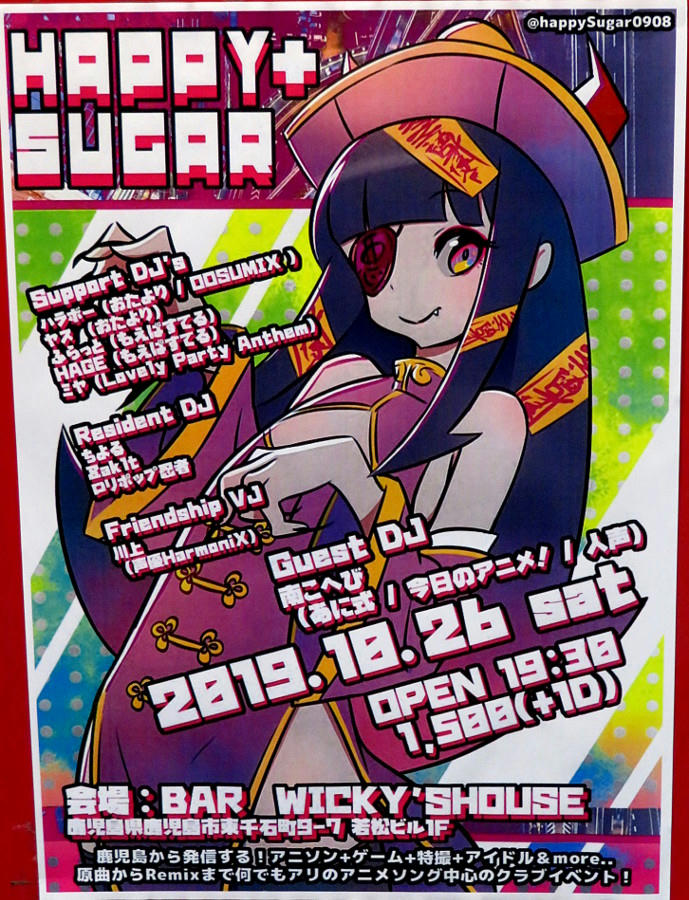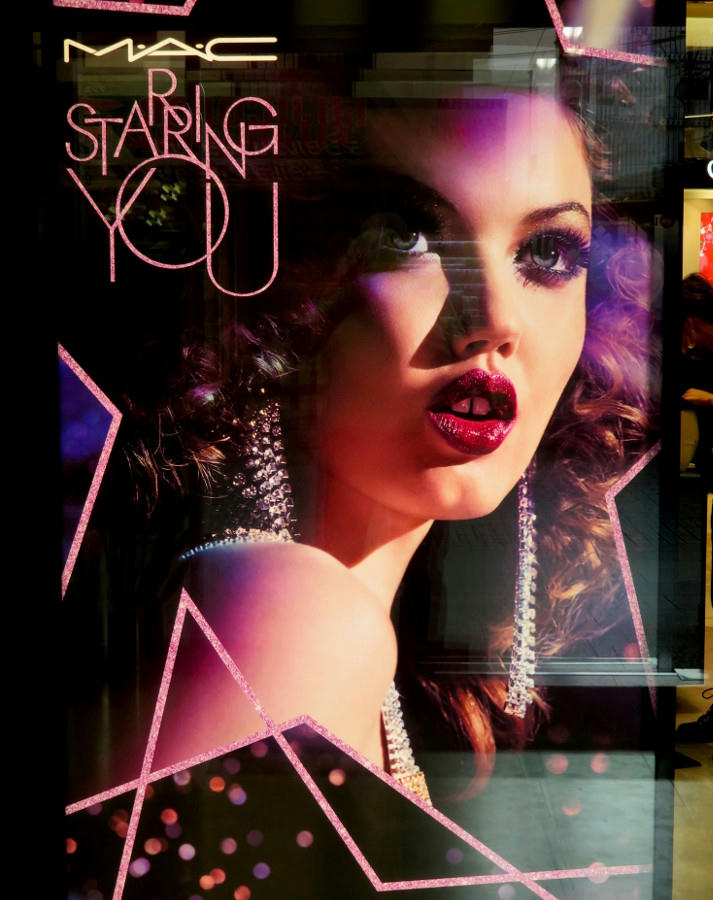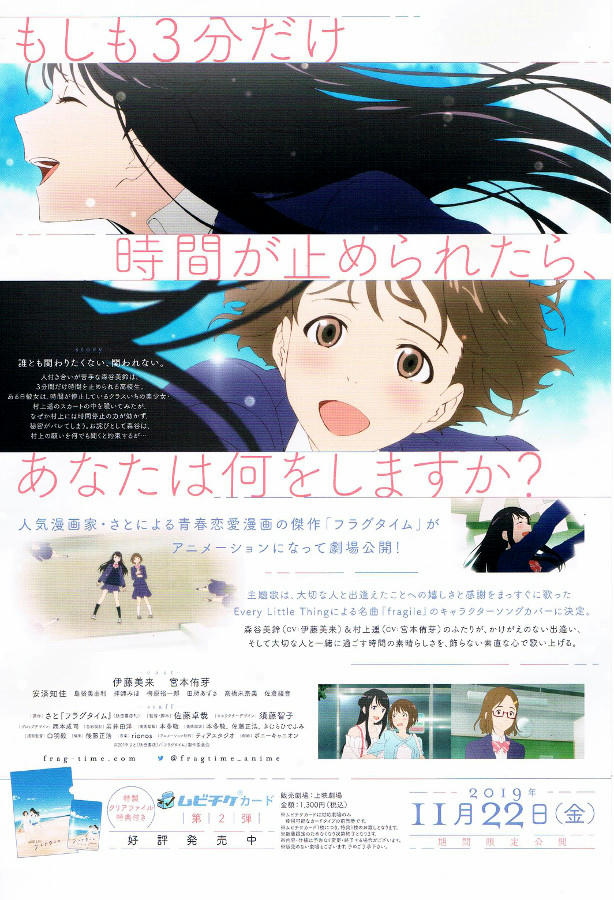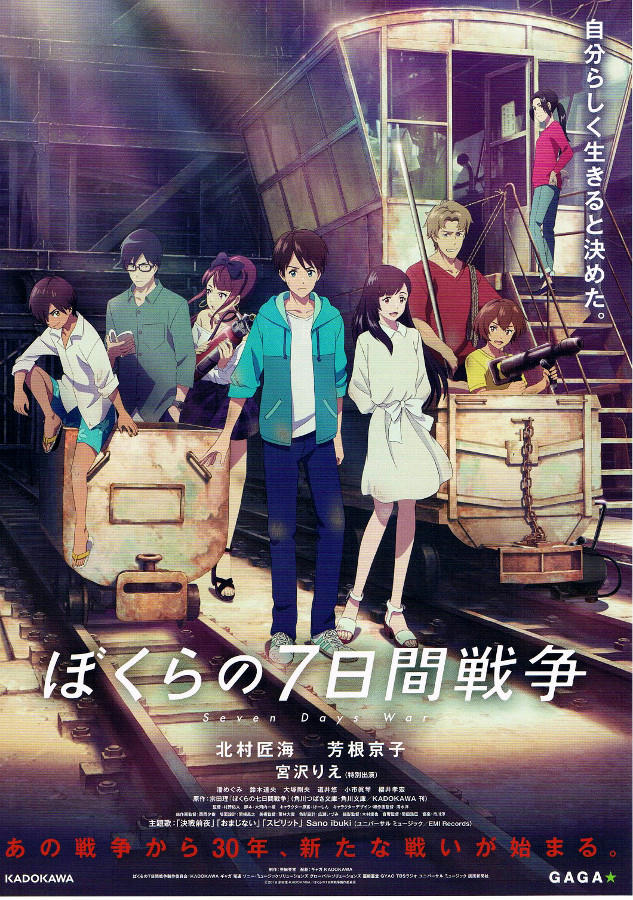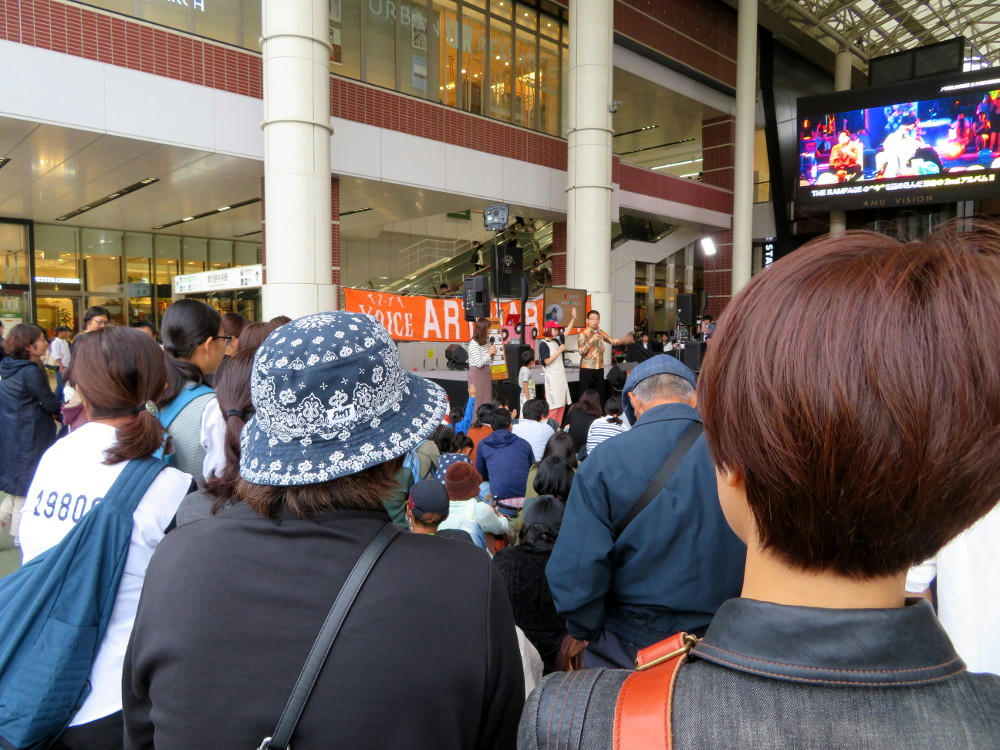Tenmonkan Baru

This weekend had a lot more going on than there has been in a long time, but very little of it was all that great, for what I saw of it. First, I was walking in to the English school at 12:45 PM for my first lesson on Saturday, when I discovered a stage being put up in the Tenmonkan arcade. The sign advertises "Tenmonkan Baru Machi," which is essentially a coupon book for restaurants in the area, I guess. It costs 4000 yen ($38 USD), and I've never bothered getting any more detail than that. The sign says that there will be an Ukon (drink to help you sober up faster) give away at 4:30 PM, followed by a wine give away at 5:10 PM. After that, there's supposed to be live entertainment from 5:15 PM, but it doesn't mention when things end.
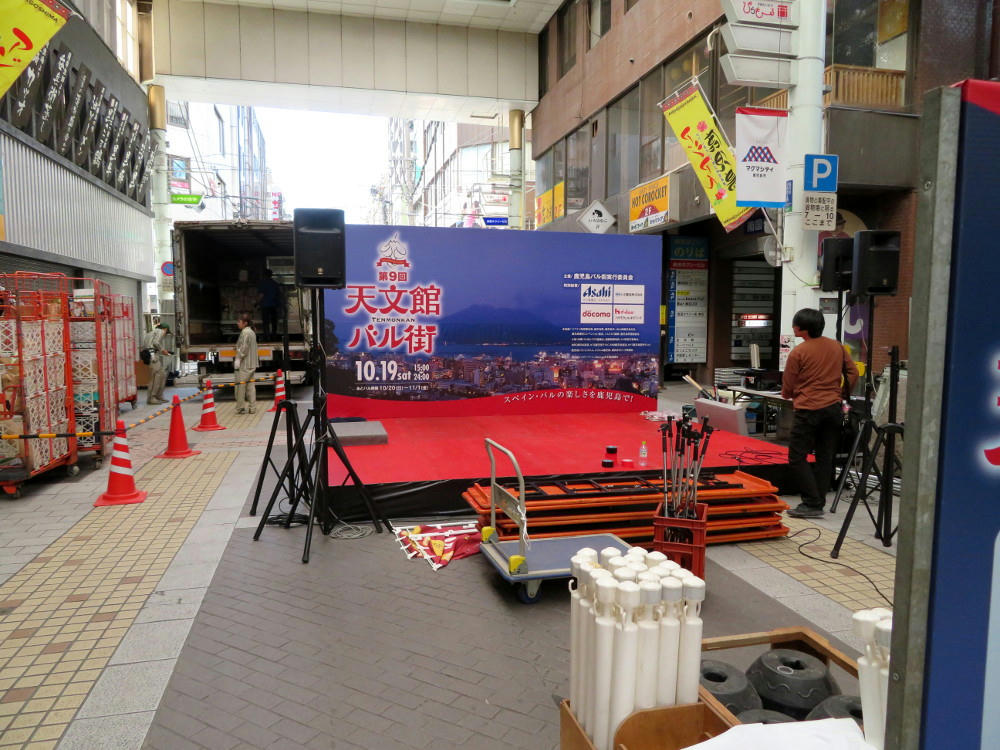
I was in the school until 7 PM, and I came back here after I got out, and the stage had already been dismantled.
Milk Days

A couple blocks farther on, the Japan dairy association was running another one of their periodic events to promote milk sales, and provide bone density testing for women. At a previous event, they had a machine mock-up of a cow. This time, we have the real thing. Notice the bucket to deal with "manure spills." Japan is a clean country.

Bessy doesn't look too unhappy.

Can't say as much for everyone else participating.

The banner reads, "As expected, let's do milk."

The table here was giving out small cup samples of Daily brand milk. The servers didn't offer me any, and I didn't bother trying to grab any. It's not a brand I normally buy.

The live stage also had the perennial live-action show with Milkman, the Princess, and Mr. Bone Decay. Two of the actors here posing for the meet-and-greet after one of their performances.
Bouzu Meets

On the other side of Tenmonkan, at Honganji Temple, the priests were holding another of their "Bouzu Meets" fests (Bouzu = "priest"). It was running from 11 AM to 4 PM, and I just had enough time to run into the grounds for a few photos before I had to be at the school.

The front parking lot had booths for food, and a "Priest Bar" (priests serving cocktails as bartenders).

Some of the other tables had arts and crafts, and children's activities.

Boombox balloons.
As mentioned above, I had to work Saturday. Initially, my schedule was to go from 1:30 PM to 5 PM, then 6-8 PM. However, one of the students decided to move their lesson start time to 5 PM, effectively eliminating the break I would have had. Regardless, Bouzu Meets ended at 4 PM, so it wouldn't have mattered. On the other hand, there was nothing on the schedule I had any interest in. The last time, they hosted Bon DX, which was great. This time, all the stage performances were by the priests themselves. Sigh. Funny enough, the posters promoted this fest as being music oriented, with a priest DJ. The closest thing I saw coming to that was a priest standing at the front gates, staring at a mixer board, and some music blaring from the PA system inside.

In the main temple building, the signs advertise "baby massage" for 100 yen ($1 USD).

The priest on stage was just climbing up onto his sitting stand prior to starting his set. This is "rakugo," a traditional form of comedic storytelling. I couldn't stick around to watch any of it.

His biggest laughs came from his struggle to get on the platform, and then being unable to figure out how to turn on the mike.

A pair of photo cutout boards stood next to the room entrance. If you wanted to look like the gods of wind or thunder.
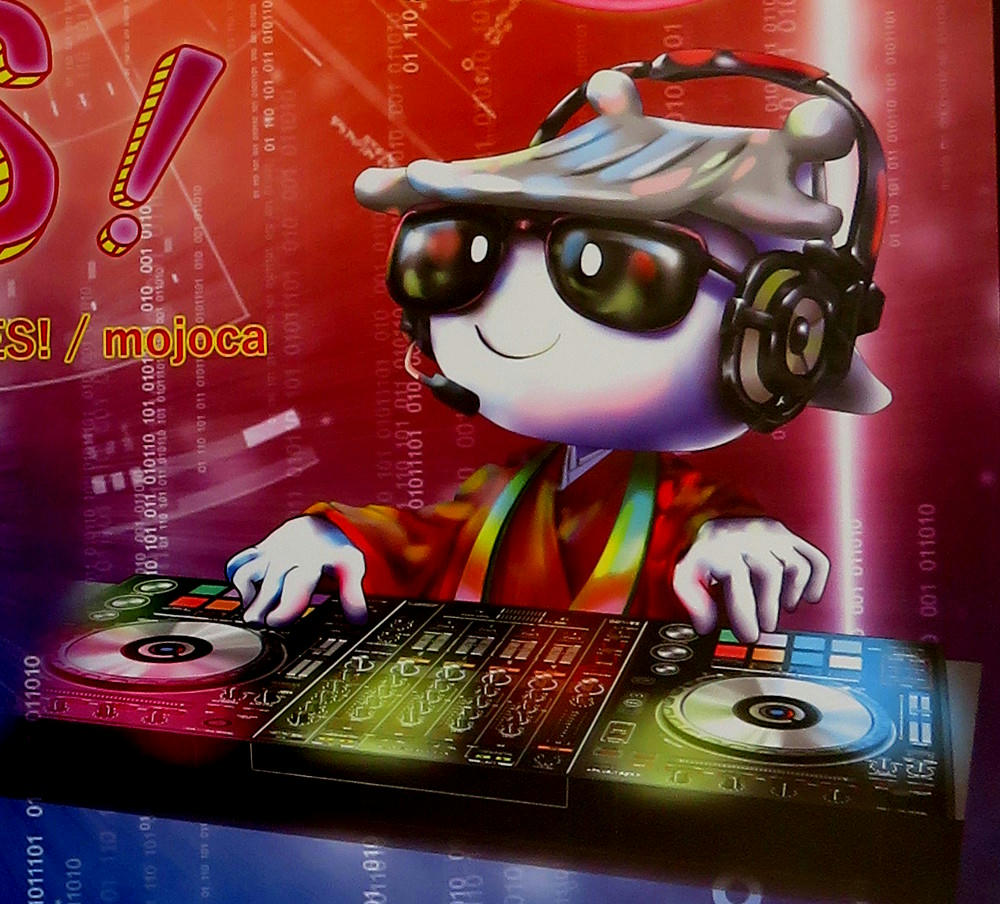
From the posters.
Craft Beer Splash

I had to swing by Maruya Gardens to get the newspaper for the school on my way in, and I had just enough time to go up to the rooftop garden to check out the Craft Beer event they had Saturday and Sunday. I was at the first one last year, and there was a lot of good live music both days. This time, the music was piped in, and the space that had been taken up by the stage was given to two more beer tables. They also had distillers selling Japanese gin (Komasa) and whiskey (Mars brand). I'd bought a bottle of Mars whiskey a couple years ago, and it was ok. I wasn't about to get anything to drink here before going into the school to teach, so I just ran around, took some photos and left.
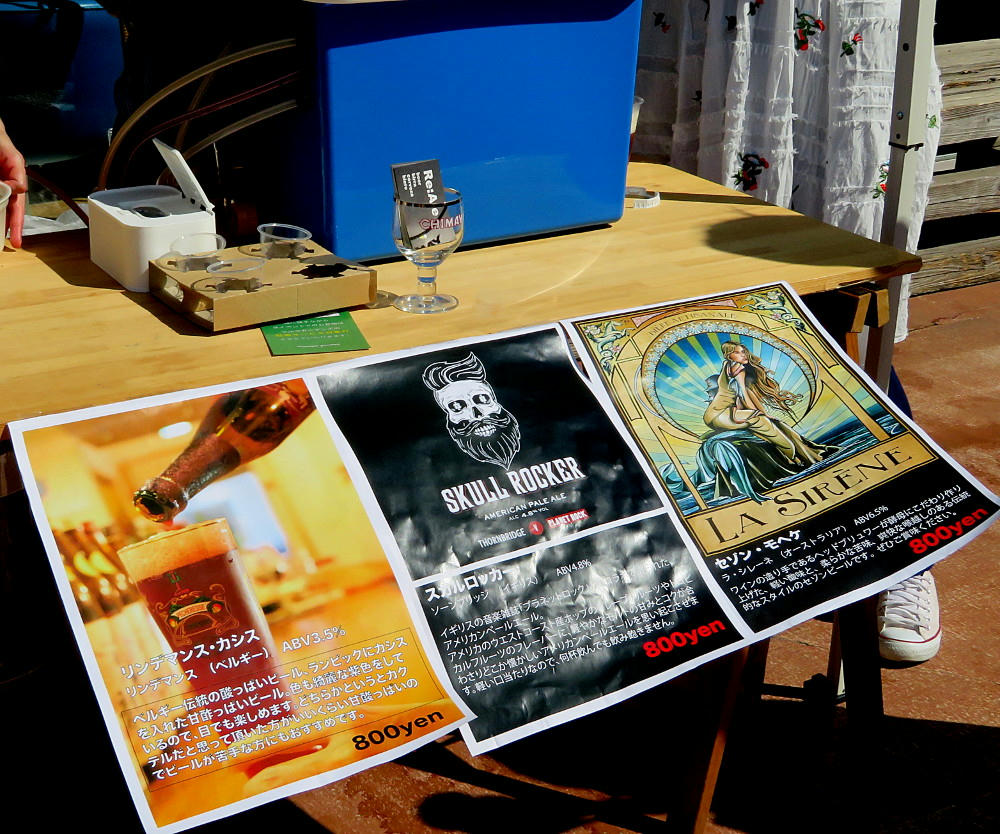
Cassis beer, Skull Rocker (American pale ale) and La Sirene. I just liked the artwork and name for Skull Rocker.


A few tables sold food, including Japanese ultra-thin dish pizza. I didn't get anything to eat, myself.

More great advertising artwork. Weird Weather Hazy IPA, Beavertown Lupuloid IPA and Peanut Butter Milk Stout. Note the prices - 800 yen. Some of the other tables had small glasses for 300 yen, regular for between 500 and 600 yen. Shiroyama Hotel was selling their sampler set for 1,000 yen, but I've had that and wanted to try something else this time.

So, my 7 PM lesson got moved to 5 PM, and my 6 PM lesson turned out to be a no-show. Unfortunately, I had to stay at the school for the full 1 hour anyway, and couldn't get out until just before 7. I ran back over to Maruya Gardens, and things were still going strong (until 8 PM). I got one small beer at the stand right in front of the door. It was an IPA, and VERY strong on the hops. That was the best beer of the night.

I also got a cup of Skull Rocker, which was smooth and very mild.
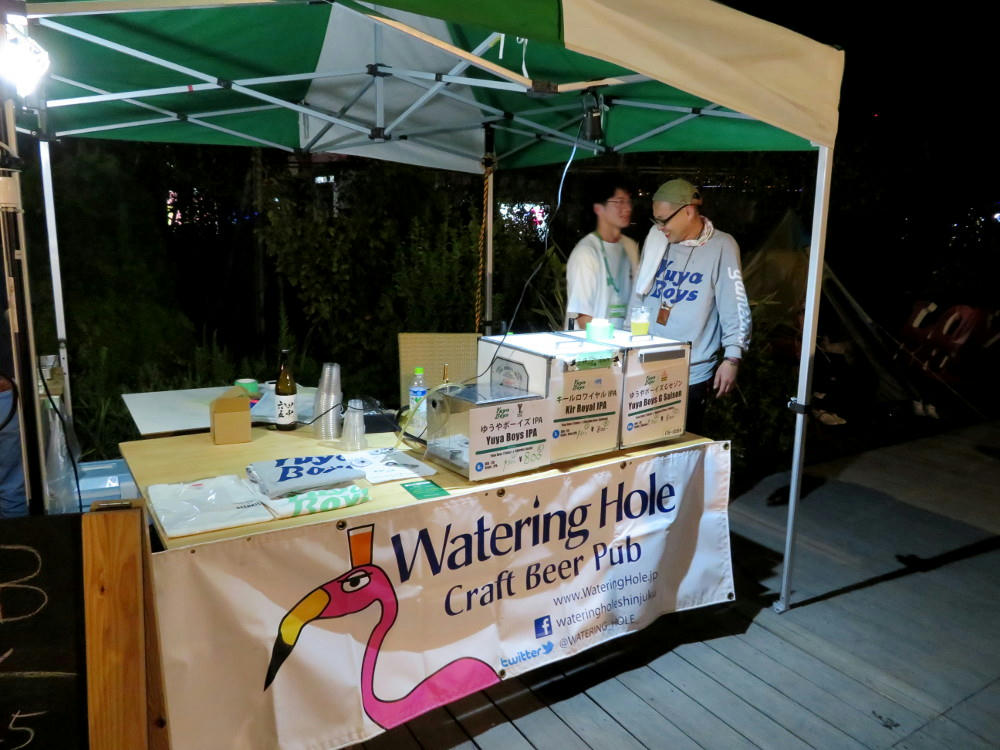
Because I was standing right next to the Watering Hole as I was drinking my Skull Rocker, I asked one of the guys there what the Kir Royale IPA was. He replied that it was a cassis fruit beer. So, I got the Yuya Boys IPA instead. That was also hoppy, but not as impressive as that first beer had been. The Watering Hole is in Shinjuku, near Yoyogi station in Tokyo. I used to spend a lot of time in that area, so I asked what things were like there now. As I was talking, a white woman overheard me say I was from Minnesota, and she mentioned that she was from St. Paul, and is now working as a translator in Kagoshima. We talked a bit, then she went back to her table to keep eating dinner. I talked to the Yuya Boys guy a bit more, but he'd gotten sullen. I finished my beer and returned home for dinner and to work on the computer for the night. I did swing by the Tenmonkan Baru spot, but the stage was gone, and all that was left was a table for selling the 4,000 yen coupon books.
Asian Fest 2019

Going in to Tenmonkan Saturday, I was mostly in the middle of the arcade, so I couldn't see Central Park from where I was. After getting the newspaper and leaving Honganji, I was able to catch part of the far corner of the parka block away, and I spotted part of a white tent. I wasn't able to get back there that night, but the advertising banners that had been hanging from the ceiling of the arcade in Tenmonkan had been advertising Asian 2019. This is the school cultural exchange event where groups from Korea, China, the Philippines, Vietnam and elsewhere meet in Kagoshima for two days to show off their songs and dances. I returned to the Arcade on Sunday specifically to verify if that was what was going on. I didn't get out of the apartment until 2 PM, arriving here in the middle of a musical performance from Thailand (I think).

This was followed by a dance by the girls. I've seen this dance before, so I continued over to the park.

All of the real music and dancing takes place in nearby Houzan Hall on Saturday (which I obviously missed). The little happening in Tenmonkan is more of an "audience service." When I came back here 15 minutes later, the Thai group was just leaving and crews were tearing down the stage and sound equipment.

The weather the day before had been near-perfect, but we've had reports of another pair of typhoons coming in. On Sunday, the sky was heavily overcast and very humid. We didn't get rain until Monday morning, though.

The park had tents for food, travel advertising, and various arts and crafts. Here, one group demonstrated tea ceremony.

The games (Othello) and music instruments tent had live demos of flute and koto. The music was surprisingly interesting.

The tents were all around the perimeter of the park. Everything else was empty. Food consisted mostly of small bowls of curry, curry rice, naan, and Pho from the local Sri Lanka, Thai and Indian restaurants. I wasn't hungry that early in the day, but I did want a glass of iced Vietnamese coffee. Unfortunately, it had been pre-made in a pitcher and the ice had melted. Too watery, but only 100 yen, so not that much of a loss.

The park also had a small stage at one corner for hosting Japanese school performances. Here, three teams of two students each are blind-eating curry soba. The idea is that the one sitting down has a bib on, and does the eating. The one in back wears a blindfold and must try to feed the first one by touch. First pair to finish the bowl wins. The guy on stage is some local TV personality. He tried to be funny by using broken English at the foreigners sitting in the front row. "I am number one genius performer in Japan. You understand?" Almost no one laughed at him, but he didn't seem to notice.
I recorded part of the contest, but the camera battery ran out towards the end of it. I put in the replacement, and got bored waiting for the next stage thing to start. Instead, I headed for Amu Plaza.
KKB Days
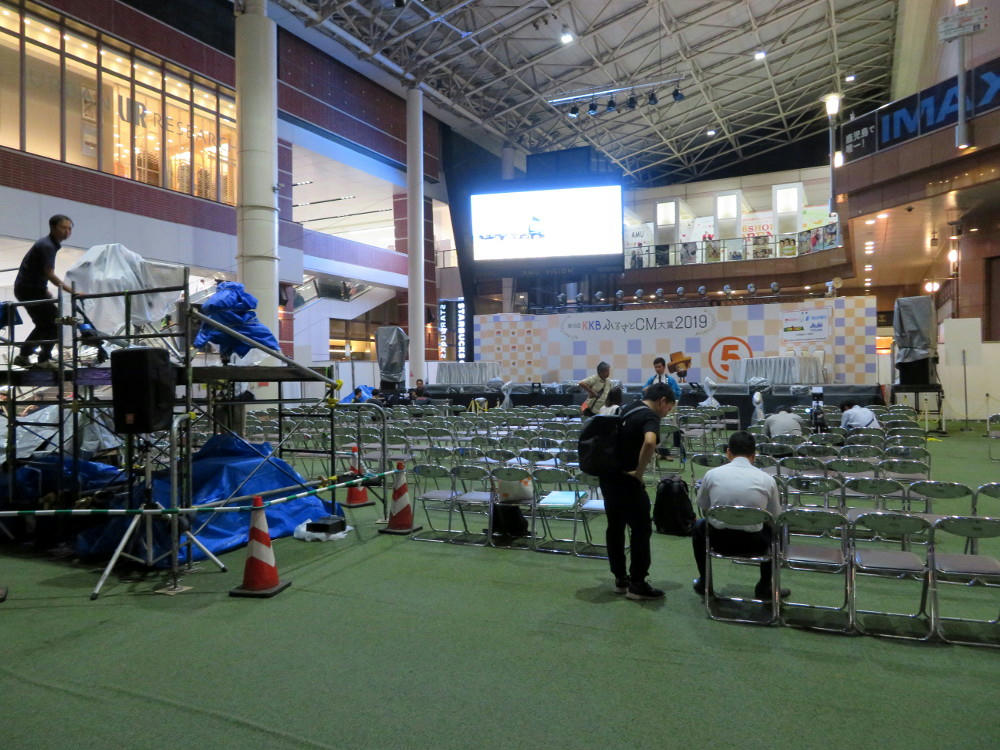
I'd been at Amu Plaza Friday night for dinner, and the crews were putting up the stage and camera stands for KKB TV's big new season TV shows promo. I've seen this before too - mostly boring talking on stage, and stuff for children out on the promenade. I wasn't expecting much on Sunday, but I did want to try getting a few photos for the blog.

Sunday, I got to Amu at about 3 PM when there was a manzai comedy duo on stage. I got one photo of the schedule, with part of the audience for atmosphere, when a security guard came up and said "no cameras." This after some Japanese guy had walked by and taken pictures on his smartphone. I expected a "no camera" rule for the music acts (Tower Records is especially notorious for this), but not for a manzai act. The two guys basically just stood around and insulted each other in Japanese. I got bored and went to the promenade.

They had the same stuff as at past events.

The "Prappy" bounce room.

The pose area for getting your photo taken with Doraemon. This was really popular with mothers wanting photos of their young children. Previously, the KKB staff were really eager to take your camera and get you in the shot with Doraemon (and your children, if you had them), but this time, they just stood around and looked unhappy.

For some reason, the Purikure TV anime show characters get used year after year for the voice over booth. The staff runs a clip from the anime, and you get to do the voices for it. Popular with female junior high school-aged students.
I went into Amu and sat down for coffee and a sandwich at Seattle's Best, and read volume two of the
Mud Men manga. When I was done, I returned to the KKB stage. On the sidelines, I spotted a tall white guy recording video of the AKB 48 Team 8 girls. Team 8 is way, way down the list of popularity for the AKB-48 franchise, but there were still a couple hundred people (mostly young guys) packing the area in front of the stage. I looked around for security guards, wondering why they weren't enforcing the no camera rule now (the sponsors sell glossy photos for autographing, and DVDs, so they're really hardcore when it comes to anyone trying to get free likenesses of the girls). The nearest guards were around the corner at the front of the plaza. I debated telling them about the foreigner taping their show, then thought, "More luck to him" and left.
I needed to do a bunch of shopping, part of which took me back to Maruya Gardens. I knew that the latest volumes of the
Q.E.D. and
C.M.B. manga had hit Tokyo on the 17th, and that they probably wouldn't reach Kagoshima until the 20th. Kinokuniya didn't have them, but Junkudou in Maruya did, so I got them then. I did have the option to go up to the rooftop garden for the last couple hours of the Beer Splash, but I'd spent all my beer money the day before, so I went to Don Quixote to buy cleaning supplies for the apartment. I was also going to get a couple bags of Doritos, which they sell for 80 yen (75 cents), but nearly all of the snacks shelves were completely cleared out. I guess the waves of tourists and Asian Fest school kids had hit the store like locusts over the weekend before I could get there. Oh well.
Then, it was back to the apartment for a very early dinner, and to spend the rest of the day working on the computer. Lots of stuff happening this weekend, but nothing I really got to see much of. I liked the Skull Rocker, though.







